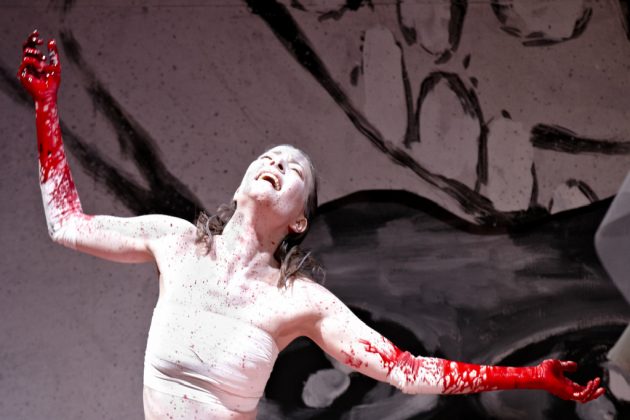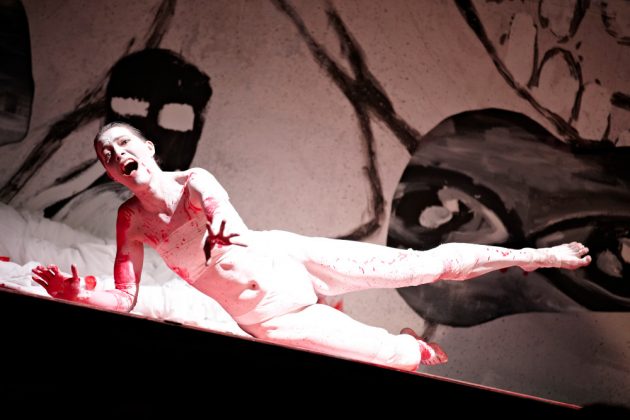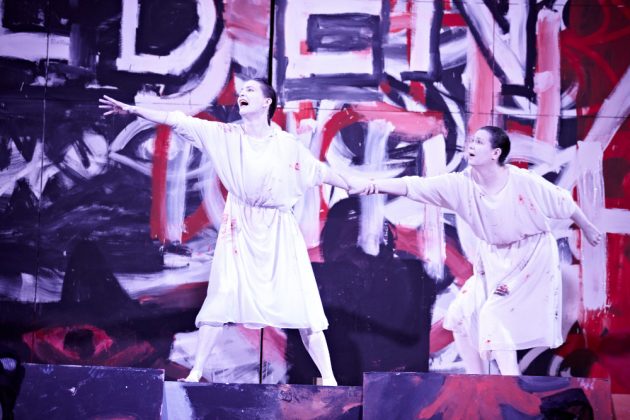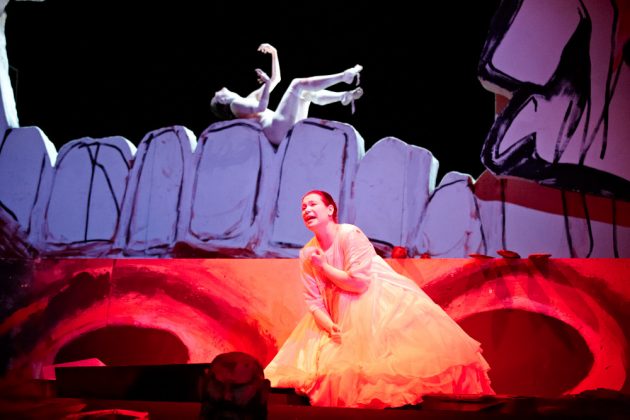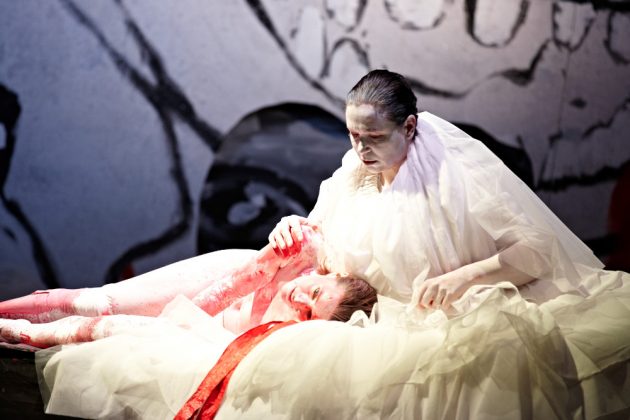Salome
Music Drama in Two Acts
Music: Richard Strauss, Text: Oscar Wilde
This cry is actually a cry of love: “I want to understand myself, I would like to be understood, recognized, embraced, I would like, that someone takes me with them.” Indeed this is the meaning of the cry. (Roland Barthes)
Direction & Stage design: Michael Simon
Costume & Video design: Zana Bosnjak
Dramaturgy: Christian Steinbock
Salome (Dancer): Eva Burghardt
“Salome´s head” is the setting. Reality and authenticity are nowhere to be found. Only the prophet John the Baptist appears in an everyday white shirt, the only man who does not give his gaze to her. He becomes a screen on which the princess can project.
Simon´s take becomes especially striking during the famous “Dance of the Seven Veils“, during which Salome tries to make her intrusive step father fulfill her wishes. Muscle after muscle starts to tremor in her body, until she coils up on the ground, bleeding and full of pain. In this Braunschweig production one won’t see Salome´s dance, but rather the injuries which these humiliations cause in her. Instead of oriental erotic, the director places his emphasis on psychoanalysis. This is made possible thanks to the placing of a dancer (Eva Burghardt) next to the singer (Yamina Maamar). Using these two performers, he shows the inner conflict of the figure and her tendency from the beginning towards self-adulation. The entire show is consistent and radical, yet won´t repel. It is a grand evening at the opera.”
(Hannoversche Allgemeine Zeitung, 4.6.2013)
